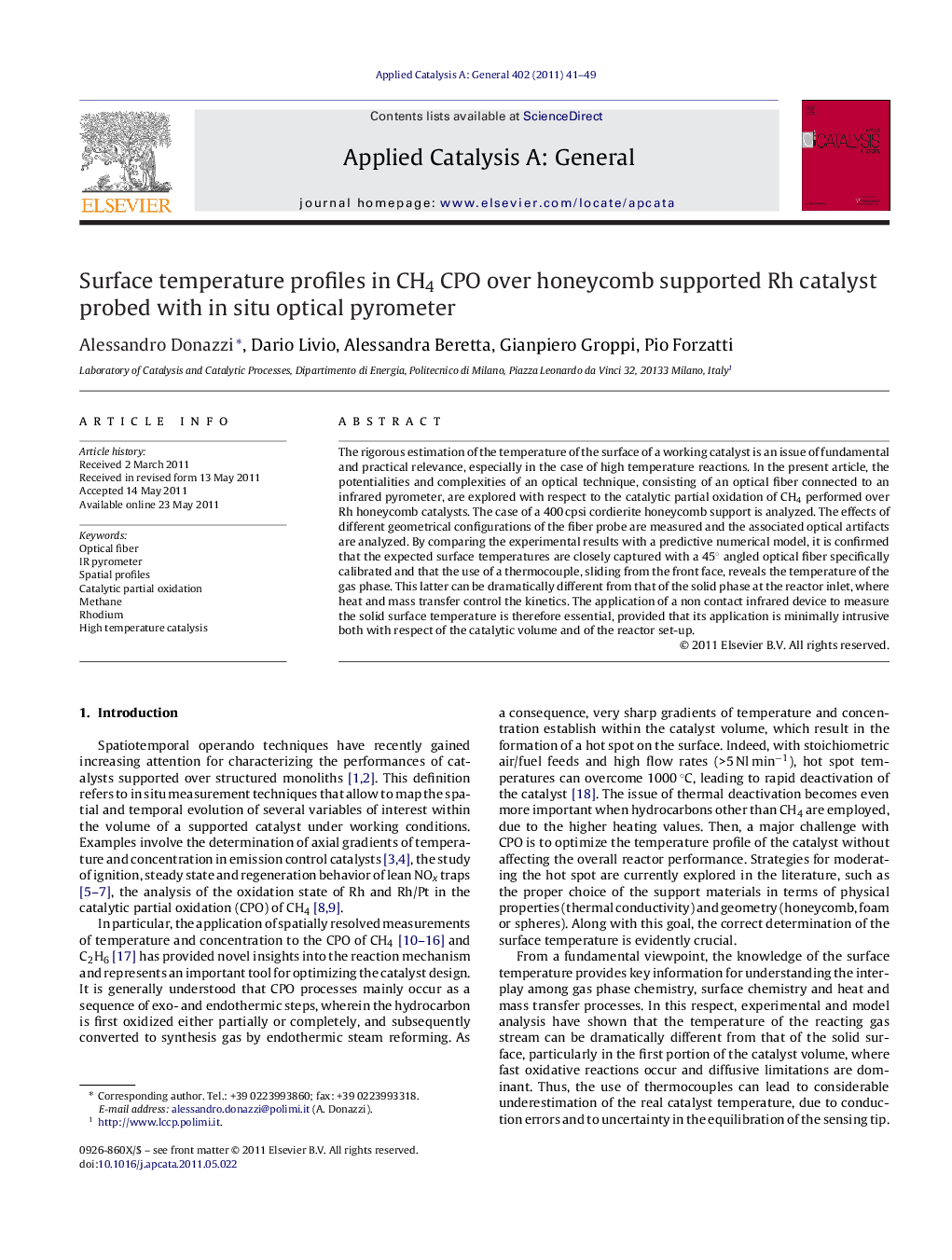| Article ID | Journal | Published Year | Pages | File Type |
|---|---|---|---|---|
| 41238 | Applied Catalysis A: General | 2011 | 9 Pages |
The rigorous estimation of the temperature of the surface of a working catalyst is an issue of fundamental and practical relevance, especially in the case of high temperature reactions. In the present article, the potentialities and complexities of an optical technique, consisting of an optical fiber connected to an infrared pyrometer, are explored with respect to the catalytic partial oxidation of CH4 performed over Rh honeycomb catalysts. The case of a 400 cpsi cordierite honeycomb support is analyzed. The effects of different geometrical configurations of the fiber probe are measured and the associated optical artifacts are analyzed. By comparing the experimental results with a predictive numerical model, it is confirmed that the expected surface temperatures are closely captured with a 45° angled optical fiber specifically calibrated and that the use of a thermocouple, sliding from the front face, reveals the temperature of the gas phase. This latter can be dramatically different from that of the solid phase at the reactor inlet, where heat and mass transfer control the kinetics. The application of a non contact infrared device to measure the solid surface temperature is therefore essential, provided that its application is minimally intrusive both with respect of the catalytic volume and of the reactor set-up.
Graphical abstractFigure optionsDownload full-size imageDownload high-quality image (132 K)Download as PowerPoint slideHighlights► Operando technique for short contact time catalytic reactions with strong T gradients. ► Spatially resolved surface temperature profiles probed by in situ optical technique. ► 45° angled optical fibers allow an accurate measurement of the surface temperature.
